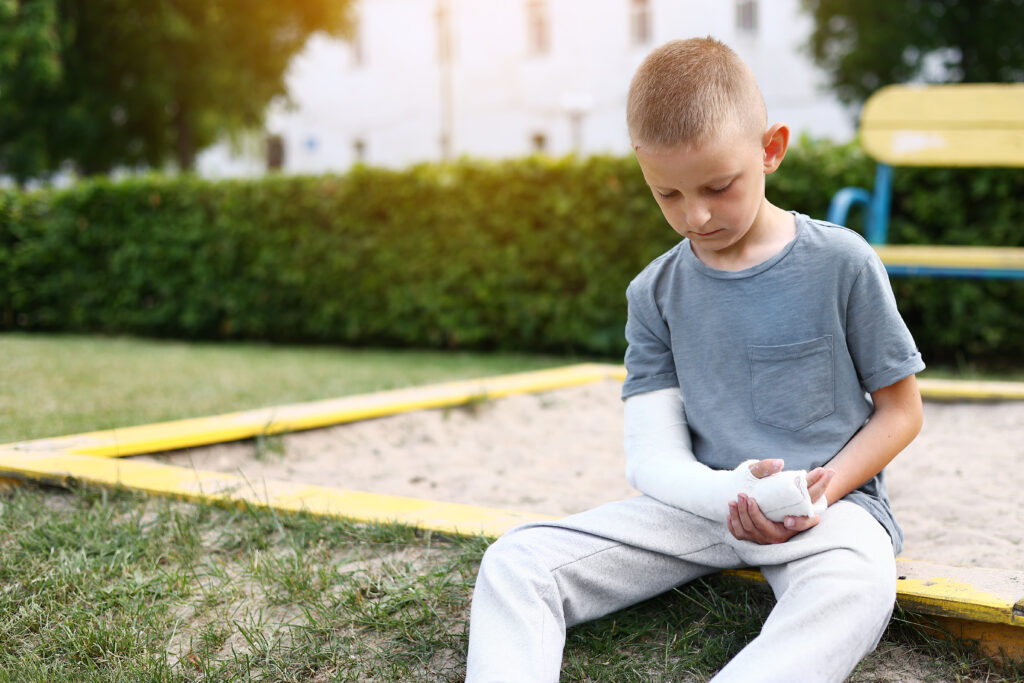Elbow fractures in children might sound alarming at first, but understanding them and their recovery journey can significantly ease the worries of parents. These injuries are relatively common due to children’s active nature and their frequent involvement in physical play and sports. Despite the initial fear, the prognosis for a full recovery is excellent, with the right care and approach.
Understanding the recovery timelines is necessary as it helps in setting realistic expectations and preparing for the journey ahead. It also allows for better planning around the child’s activities, school attendance, and any necessary adjustments at home to accommodate their healing process.
Remember, every child’s recovery is unique, but knowing the general factors that affect healing can empower you in supporting them through this phase.
Factors Affecting Recovery Time
Age of the Child
Children’s bodies are in a constant state of growth, which plays a significant role in their healing capabilities. Younger children tend to heal more quickly due to their rapidly dividing cells, whereas older children might take a bit longer as their growth rate slows down. However, the remarkable resilience of young bodies often works in their favor, promoting efficient healing processes.
Severity of the Fracture
The complexity of the fracture significantly impacts the recovery timeline. Simple fractures, where the bone has not moved out of place, usually heal faster and might only require casting. In contrast, more severe fractures, especially those involving displacement or multiple fragments, may require surgical intervention, extending the recovery period.
Treatment Method
The chosen treatment method—casting, surgery, or a combination—also influences the recovery duration. Casts are commonly used for simpler fractures and effectively immobilize the area to facilitate healing.
Surgery might be required for complex fractures and involves a longer recovery process, including the time needed for the surgical wound to heal before the bone fully recovers.
Individual Healing Rates
It’s important to remember that each child’s body heals at its own pace. Factors such as overall health, nutrition, and even genetics affect how quickly a child can bounce back from an elbow fracture. Patience and understanding are key as you support your child through their recovery journey.
Signs of Healing and When to See a Doctor
Recognizing the signs of proper healing is essential for ensuring a smooth recovery process. These include reduced pain, decreased swelling, and the gradual return of mobility and strength in the affected arm. It’s encouraging to witness these positive changes as they indicate that the body is effectively repairing itself.
It’s equally important to be vigilant for any signs of complications, such as persistent pain, increased swelling, or signs of infection at the injury site. If you have any concerns about your child’s recovery, do not hesitate to consult a doctor. Dr. Brian Capogna can provide reassurance, adjust treatment plans if necessary, and address any complications early on.
Tips for Helping Your Child Heal
Supporting your child through their healing process involves more than just physical care; emotional support is equally important. Here are some practical tips for aiding their recovery:
- Pain Management: Follow the doctor’s advice for pain relief, which may include medication, ice packs, or gentle exercises.
- Activity Restrictions: Ensure your child adheres to activity restrictions to avoid further injury. Finding alternative activities that keep them engaged can help.
- Emotional Support: Offer plenty of encouragement and understanding. A positive environment contributes to both emotional and physical healing.
Conclusion
While elbow fractures in children can be a challenging experience, most children heal remarkably well. It’s essential to follow the prescribed treatment plan and keep up with regular check-ups with the doctor to monitor the healing progress. Remember, your support, patience, and attentiveness play a crucial role in your child’s recovery journey.
For those seeking more in-depth information about pediatric elbow fractures, additional resources are available in our previous article A Parent’s Guide to Understanding Pediatric Elbow Fractures. Here, you can explore further details or set an appointment with Dr. Capogna for personalized advice and care.

